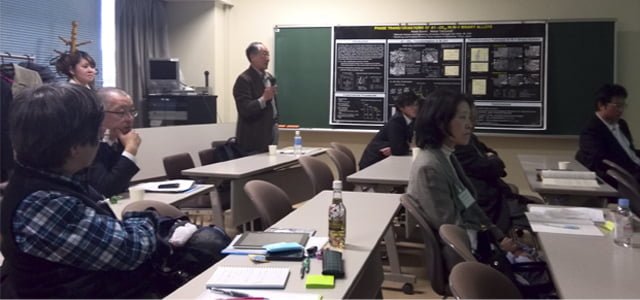The Japanese Cold Fusion Research Society (JCF) held its 14th meeting last December at the Tokyo Institute of Technology, where Dr. X.F. Wang of Arata R&D Center and Hydrogen Eng. A&D Co. and Hideki Yoshino of Clean Planet, Inc. both reported on academic and industry researchers presenting their most recent results.
The JCF-14 Proceedings edited by Akira Kitamura of Technova, Inc. and Kobe University consists of papers of presenters at the event.
“… cold fusion has a potential ability to establish a small-scale, radiationless nuclear reactor, and hopefully to shorten half-lives of radioactive wastes by nuclear transmutation,” writes Kitamura in the Preface.
He believes that this approach has the potential …
“not only to realize an environmentally-sound nuclear power system with zero emission of the greenhouse gases and other harmful oxides, but also to develop a novel technique for disposal of the nuclear wastes produced by fission reactors.”
Transmutation data was presented by several speakers including Yasuhiro Iwamura and S. Tsuruga of Mitsubishi Heavy Industries and Hideo Kozima of Cold Fusion Research Lab. Several theoretical papers are published as well.
Of particular interest to general readers is Hideo Kozima‘s paper What is cold fusion?
In the essay, he defines: The CFP (Cold Fusion Phenomenon) stands for “nuclear reactions and accompanying events occurring in open (with external particle and energy supplies), non-equilibrium system composed of solids with high densities of hydrogen isotopes (H and/or D) in ambient radiation” belonging to Solid-State Nuclear Physics (SSNP) or Condensed Matter Nuclear Science (CMNS). (CFRL News No.81, http://www.geocities.jp/hjrfq930/).
Kozima goes on to say, “The most important fields of the CFP developed after the initial discovery in 1989 are various kinds of events in protium systems and the nuclear transmutations both in deuterium and protium systems which have not been in their targets of the evaluation of the two DOE Reports [DOE Reports 1989, 2004].”
His survey of CF data has caused him to write the “irreproducibility of events in the CFP [cold fusion phenomenon] discussed in Sec. 3 is closely related to the complexity in this phenomenon.” Solutions to data sets are “using the Feigenbaum’s theorem describing a nature of an equation of nonlinear dynamics [Kozima 2012, 2013]”. In response, Kozima presents a “TNCF model [Kozima 1998, 2006] with a single adjustable parameter nn is based on the whole experimental facts obtained in materials composed of various host solids and hydrogen isotopes not only deuterium but also protium.”
Find the essay What is Cold Fusion? by Hideo Kozima in the JCF-14 Proceedings. [.pdf]
See also:
Industry and academic partnerships report from JCF-14 meeting


Chemonuclear fusion is cold fusion.
Chemonuclear Fusion is a type of low energy nuclear fusion that has been shown to produce energy in two experiments. Aneutronic nuclear fusion can provide unlimited electric power without polluting the environment with radioactive waste and greenhouse emissions. Chemonuclear processes in small dense white dwarf stars accelerate the rate of nuclear fusion and cause them to explode in spectacular supernova explosions.
The mission of the Chemonuclear Fusion Project is to raise awareness of this new and vitally important source of environmentally clean energy and to promote research and development.
The Chemonuclear Fusion Project is soliciting volunteers to help our crowdfunding and educational campaigns. Our crowdfunding webpages will soon be up and running. We want people to post to discussion groups and help us get the word out that aneutronic chemonuclear fusion might be the radiation free way to power the world if we can get the funding to build and test reactors.
Artists can help us design T-shirts, mugs, and promotional items to sell and give away to our contributors. Writers to write promotional materials and post to web forums are also wanted. Video producers and professional and amateur scientists who can help the public understand the concepts of chemonuclear fusion are encouraged to contact us also.
Visit our facebook page and give us a like. We welcome your comments and questions!
https://www.facebook.com/chemonuclearfusionproject
Tadahiko Mizuno’s is one of cold fusions heroes. In a closet sized lab he was able to show that there were isotopic shifts taking place in an F&P type cell. His work was ignored by the world’s “finest institutions”. There has to be a complete reranking of the world’s universities to prevent this sort of thing from happening again.